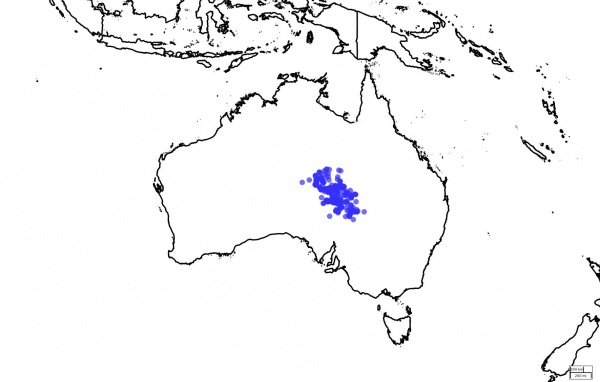Facts About Eyrean grasswren
The Eyrean grasswren, scientifically named Amytornis goyderi, is a small, well-camouflaged bird from the passerine family Maluridae. Native to the arid regions of Central Australia, it was first discovered by F.W. Andrews in 1874 near the Macumba River at Lake Eyre. The species was named in honor of George Woodroffe Goyder, the South Australian Surveyor General.
This grasswren is the smallest of its genus, measuring between 14 and 16.5 cm in length. There are slight variations in size and appearance between males and females, as well as among different populations.
The Eyrean grasswren is predominantly found in the dune fields of the Simpson and Strzelecki deserts in Central Australia, particularly in South Australia, Southwest Queensland, and the Northern Territory. It prefers habitats with sandhill canegrass tussocks on dune crests and slopes, as well as areas with speargrass and spinifex.
In terms of behavior, the Eyrean grasswren is believed to be a year-round resident, often observed alone, in pairs, or in small groups. It tends to remain hidden within vegetation and moves in a distinctive "half running, half flying" manner. Its diet consists of a mix of plant material and invertebrates, which it finds by hopping between clumps of vegetation.
The breeding habits of the Eyrean grasswren are not well-documented. However, nests with eggs and nestlings have been found between July and September. Both males and females produce distinctive songs, which are thought to aid in territory marking and group cohesion.
Conservation efforts for the Eyrean grasswren focus on protecting its habitat, especially the sandhill canegrass areas. Grazing animals pose a significant threat to these habitats, making their preservation crucial.
The history of the Eyrean grasswren's discovery dates back to the 19th century, with initial findings and subsequent research contributing to our understanding of this unique bird. Despite its elusive nature and remote habitat, ongoing efforts are being made to study and conserve the Eyrean grasswren population.
